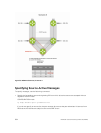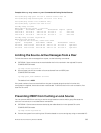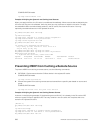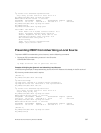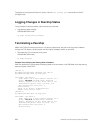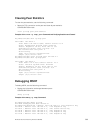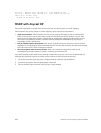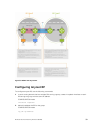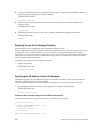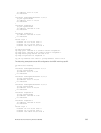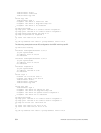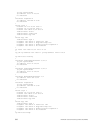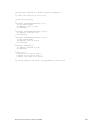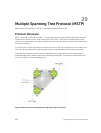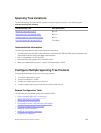
3. In each routing domain that has multiple RPs serving a group, create another Loopback interface on
each RP serving the group with a unique IP address.
CONFIGURATION mode
interface loopback
4. Peer each RP with every other RP using MSDP, specifying the unique Loopback address as the
connect-source.
CONFIGURATION mode
ip msdp peer
5. Advertise the network of each of the unique Loopback addresses throughout the network.
ROUTER OSPF mode
network
Reducing Source-Active Message Flooding
RPs flood source-active messages to all of their peers away from the RP.
When multiple RPs exist within a domain, the RPs forward received active source information back to the
originating RP, which violates the RFP rule. You can prevent this unnecessary flooding by creating a
mesh-group. A mesh in this context is a topology in which each RP in a set of RPs has a peership with all
other RPs in the set. When an RP is a member of the mesh group, it forwards active source information
only to its peers outside of the group.
To create a mesh group, use the following command.
• Create a mesh group.
CONFIGURATION mode
ip msdp mesh-group
Specifying the RP Address Used in SA Messages
The default originator-id is the address of the RP that created the message. In the case of Anycast RP,
there are multiple RPs all with the same address.
To use the (unique) address of another interface as the originator-id, use the following command.
• Use the address of another interface as the originator-id instead of the RP address.
CONFIGURATION mode
ip msdp originator-id
Examples of R1, R2, and R3 Configuration for MSDP with Anycast RP
The following example shows an R1 configuration for MSDP with Anycast RP.
ip multicast-routing
!
interface TenGigabitEthernet 1/1/1
ip pim sparse-mode
ip address 10.11.3.1/24
no shutdown
!
interface TenGigabitEthernet 1/2/1
592
Multicast Source Discovery Protocol (MSDP)



